This house on E. Lake Front Dr. in Beverly Shores reminds me of a pilot or deck house. Intentional?


In addition to Orville Redenbacher, I found Howie the Big Bull in Valparaiso, Indiana. He’s in front of Kelsey’s Steakhouse. According to Roadside America.
The statue started as mascot for Howard and Sons Quality Meats, made a newsworthy move to a new location in 1991, and again in 2014 . . . If you choose to eat, for des[s]ert you can also eat Howie in the form of a chocolate cake shaped like a cow.

When out and about, if I remember I’ll check the Roadside America app (or Atlas Obscura) to see if there are any local oddities like Muffler Men. I found out there’s an unusual statue of Orville Redenbacher, the popcorn king and agricultural scientist, in Valparaiso, Indiana. This was taken August 15, 2020, when he was one of the people you could sit this close to unmasked.

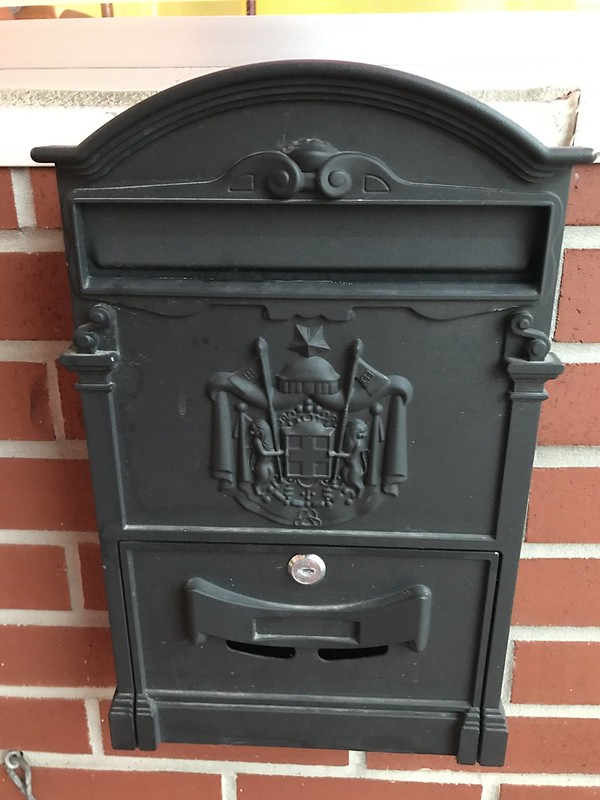
I’ve been to Dog Days Ice Cream Parlor in Chesterton, Indiana, many times, but I hadn’t noticed this until a couple of weeks ago. My first thought was mailbox — where would they get mail? — but I was thrown off by the lack of markings. That is, the Cutler mailing system has many markings, including “U.S. Mail,” so I thought it must be a requirement for a mailbox. The medieval subject with the lions threw me off too. I can’t tell what the design means or what the near stick figures next to the lions signify.
I did a reverse photo lookup via Google and found out not only is it a mailbox, it’s more expensive than I would have expected, even on eBay. And somehow it’s “rustic” — guessing that refers to the finish since I have a “rustic” candle holder of similar finish. However it’s described, this seems to be a common mailbox. Now I wonder if I will notice it everywhere.
Miller Woods is part of Indiana Dunes National Park. The Wolverine, Amtrak’s train from Chicago to Pontiac (and back), passes it and offers an opportunity to see ridge and swale topography.
When J and I first visited Deep River County Park a few years ago, this sign intrigued us. We’d meant to return for a game, then along came COVID-19.
At last, however, with Pfizer shots 1 and 2 in arm and appropriate passage of time, we headed over to Indiana to see the Deep River Grinders take on the Chicago Salmon in a VBBA match.
We arrived just as the game was starting, and the good-sized parking lot was beyond full. Just as we were about to give up and park at one of the other lots a good walk away, a miracle happened — someone backed out of one of the prime spots close to the field. It was meant to be.
I plopped my chair on the near side of the field — the Grinders’ side. No matter — this is supposed to be a gentlemanly sport where everyone cheers everyone, everyone’s a good sport, and breaking the rules (including spitting) earns you a fine of 25¢, paid to the game’s judge.
While J went to a nearby table with food warmers that looked like it might belong to the hot dog vendor, a woman in period costume passed out cookies. Some, not all, were giving her donations, so I did too. I have no idea what they were for.
Meanwhile, it turned out the people with the food warmers were holding a birthday party, but they told J he could have any leftovers, which we did later in the game. Eventually we spotted the hot dog truck, so we ended up with two sets of hot dogs. And a cookie. And the popcorn I’d brought.
Early on the Salmon took the lead, although the Grinders started to come back. Then the Salmon had a blowout inning from which the Grinders couldn’t recover. As the game progressed, the judge (not umpire), sporting the town dress of a man of business, kept an eye on things (no doubt hoping to earn a 25¢ fine or two). He was drinking from what I thought was a beer bottle, which seemed out of place, but it turns out you can wash your hot dog down with sarsaparilla. I figured that out too late to get one.
For the seventh inning stretch, the teams performed a musical number from which we found out tidbits of trivia about many of the players.
Several times during the game, an alert sound popped up on someone’s phone. I was puzzled as the weather looked stable. I overheard that they weren’t weather alerts, but, sadly, Amber Alerts. At some point she turned the volume down, they stopped, or she left.
The game had started at 2 p.m. and ended before 4 p.m. There’s not much time wasted between pitches, batters, or innings.
After the game, some players stayed behind to practice with any interested children. One girl who looked to be about three or four years old hit the ball (with some help) and toddled around the bases (with some help). I wonder if she’ll remember that in 20 years. No doubt there’s video if she doesn’t.
While returning from Indiana Dunes today, I looked for the Interstate Inn off the I-90 on ramp. A quick glimpse left me with the impression it was gone. I was not wrong. It was demolished in June.

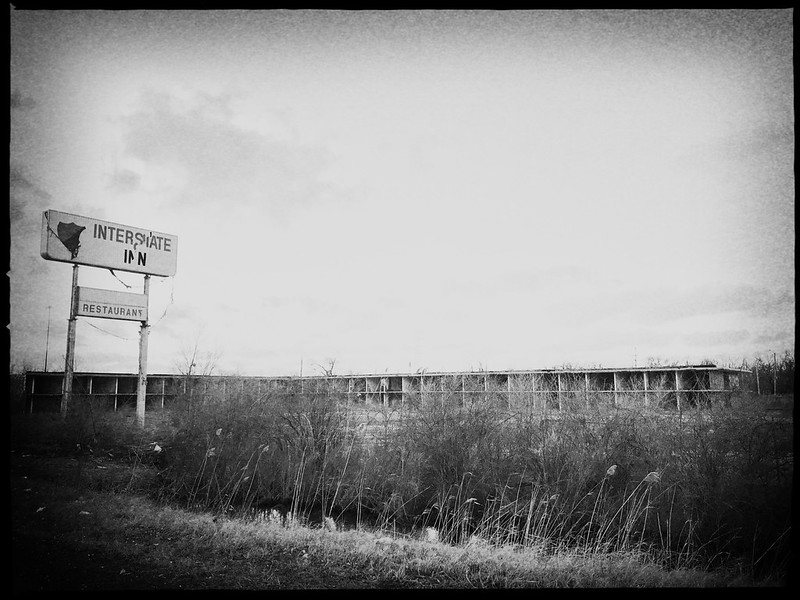
There’s some background about the inn at Lost Indiana.
Added July 12, 2020: The sign remains, much worse for the wear of the past two years.

Last year’s Maple Sugar Time at Chellberg Farm was not productive. The daytime temperatures were too cold for maple sap to run. I remember someone saying they used water in the sugar shack — there wasn’t enough (or any?) sap for the demonstration. It was still fun and informative, even without the star attraction — maple sap.
This year’s a different story. Maple sap is pouring out of the sugar maples — literally. This extractor was filling every five to six minutes. At 2 p.m., the tub was about one-third full. By 4 p.m., it was nearly two-thirds full.
The warm air, sunshine, and freely flowing sap gave the day and everyone involved energy. We had our traditional Lions Club breakfast at 2, then checked out all the stations on the trail to the farmhouse.
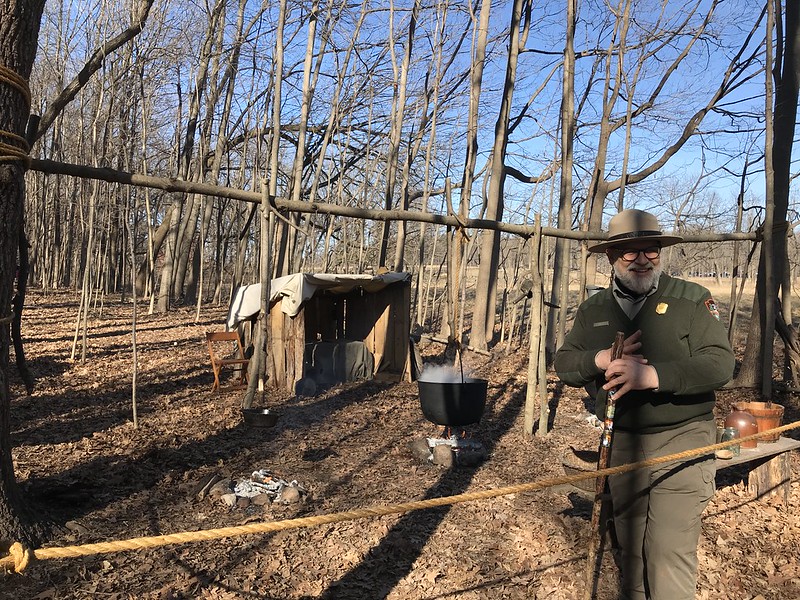

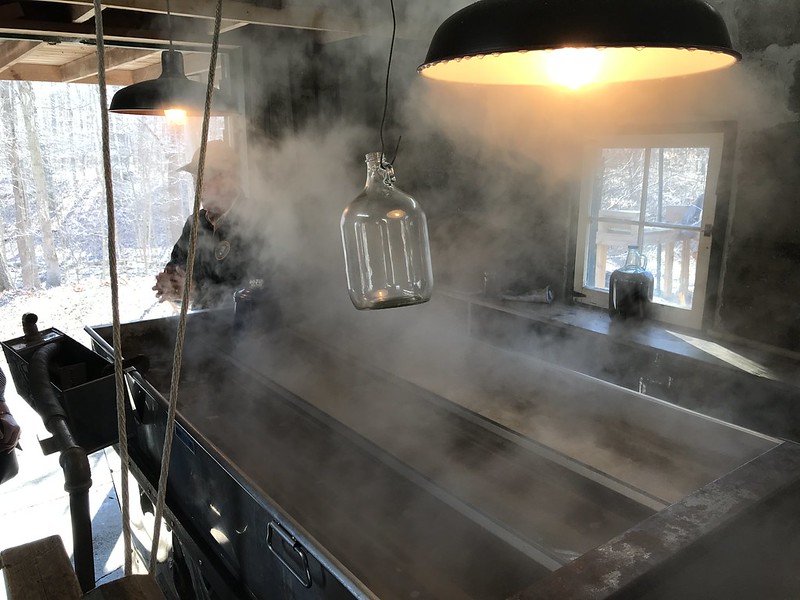
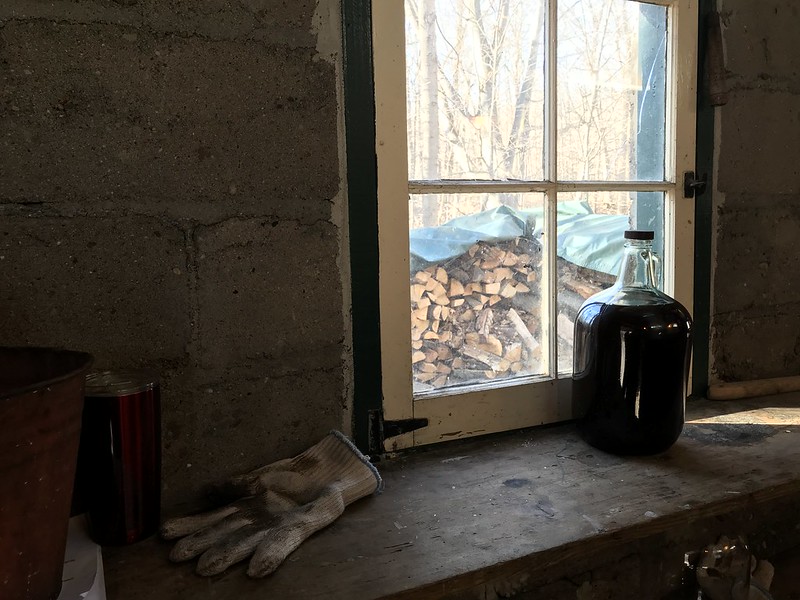
After picking up some goodies (maple syrup, maple cream, maple water, and an Indiana Dunes National Park mug), we also visited Chellberg Farm’s current animal helpers, starting with Belgian team Bill and Jack.

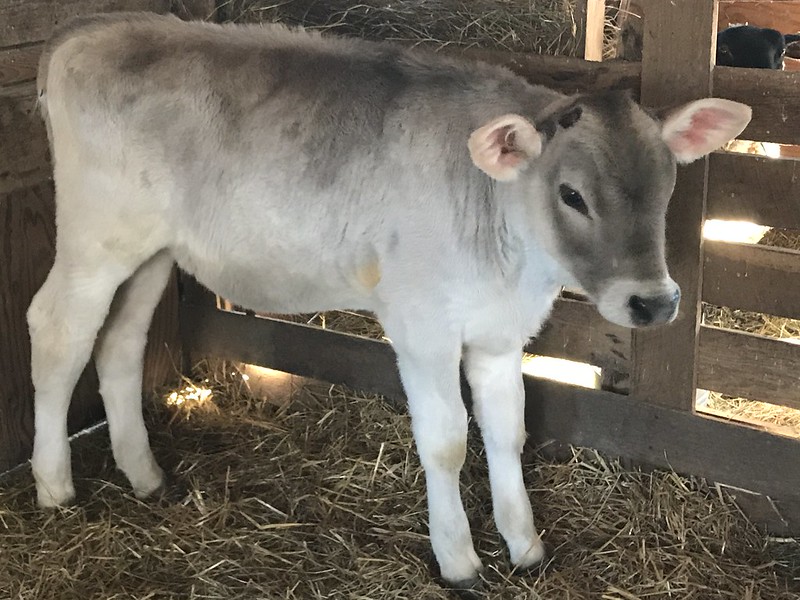
After a stop at the Schoolhouse Shop and Tiger Lily’s for dinner, time to go home and rest my own sap.